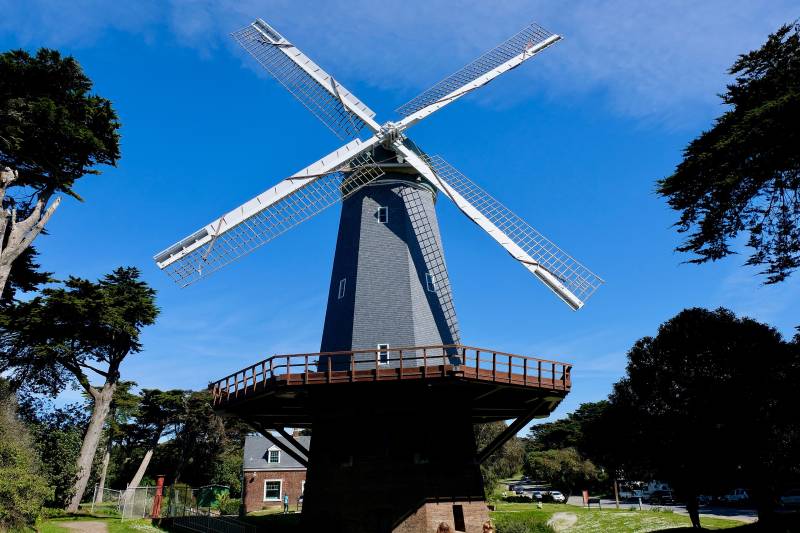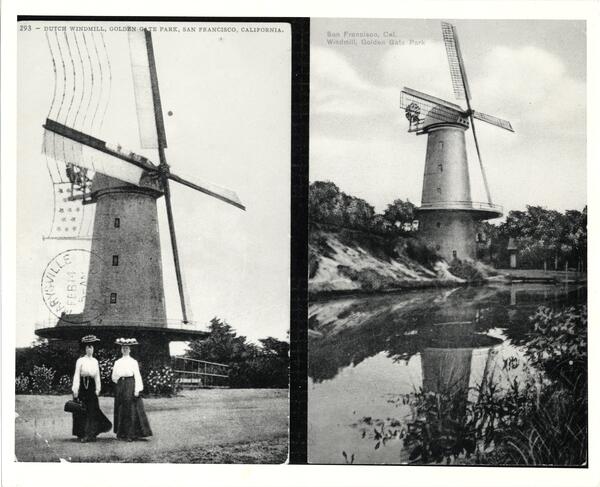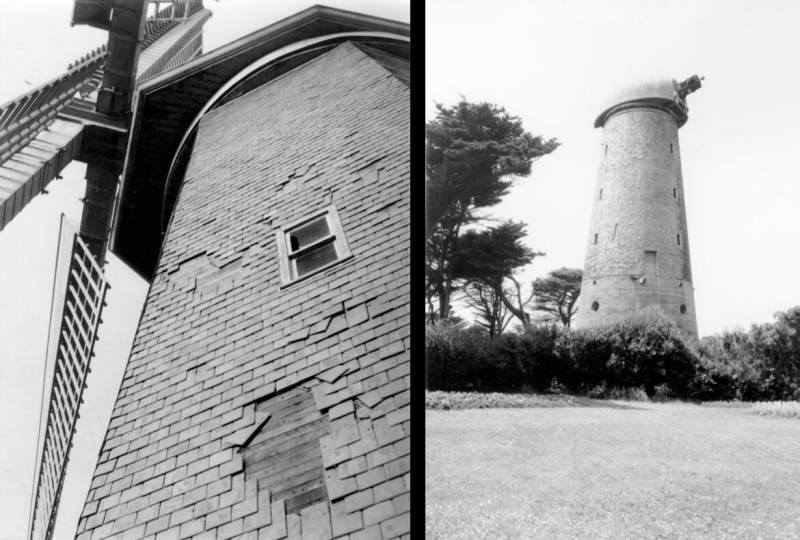This story is part of the Bay Curious series “A Very Curious Walking Tour of Golden Gate Park.”
The western edge of San Francisco’s sprawling Golden Gate Park might seem like an odd place to find two traditional Dutch-style windmills. It is, after all, some 5,000 miles away from Holland. So thought Bay Curious listener Kai Widera, 12, who lives in Larkspur. Kai was riding bikes with his dad near Ocean Beach when he spotted the towering structures and wondered — are those just for decoration, or do they have a purpose? He brought his question to Bay Curious, and producer Suzie Racho looked into it.
Untapped potential
The origins of the windmills begin back in the late 1800s, when the west end of the park was made up of mostly sand dunes. Transforming the dunes into a lush green park would require lots of water to irrigate plants and keep the sandy topsoil from being blown away. At the time, there was only one water company in town: the Spring Valley Water Company.
When Golden Gate Park was first constructed, the city supposedly struck a deal with Spring Valley Water to provide what the park needed for free. But the water company was notorious for overcharging their customers, and decided they didn’t like that deal. They threatened to turn the water off if the city didn’t pay, and they followed through on that threat several times in the 1880s. San Francisco was forking over $1,000 a month for water. A thousand dollars in 1890 would be over $31,000 today — an outrageous sum given the quantity of water needed.



